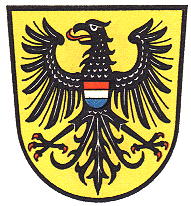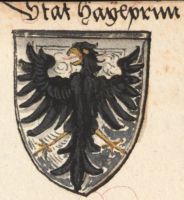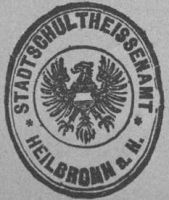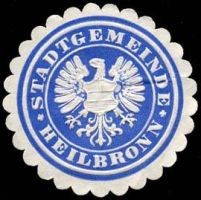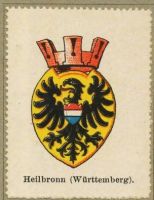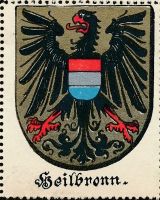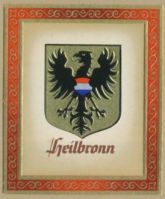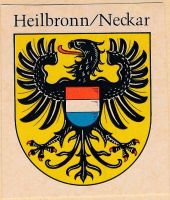Heilbronn: Difference between revisions
Knorrepoes (talk | contribs) |
Knorrepoes (talk | contribs) |
||
| Line 25: | Line 25: | ||
<gallery widths=250px heights=200px perrow=0> | <gallery widths=250px heights=200px perrow=0> | ||
File:Heilbronn1500.jpg|alt=Wappen von Heilbronn/Arms of Heilbronn|The arms around 1500 | File:Heilbronn1500.jpg|alt=Wappen von Heilbronn/Arms of Heilbronn|The arms around 1500 (Haylprunn) | ||
File:Heilbronn1530.jpg|alt=Wappen von Heilbronn/Arms of Heilbronn|The arms in a manuscript +/- 1530 | File:Heilbronn1530.jpg|alt=Wappen von Heilbronn/Arms of Heilbronn|The arms in a manuscript +/- 1530 | ||
File:Heilbronn16.jpg|alt=Wappen von Heilbronn/Arms of Heilbronn|The arms in a [[:Category:Windhag city arms|16th century manuscript]] | File:Heilbronn16.jpg|alt=Wappen von Heilbronn/Arms of Heilbronn|The arms in a [[:Category:Windhag city arms|16th century manuscript]] | ||
Revision as of 12:25, 5 September 2022
This page is part of the German heraldry portal Deutsche Wappensammlung |
Heraldry of the World |
|
German heraldry:
|
Selected collector's items from Germany:
|
HEILBRONN
State : Baden-Württemberg
Urban District (Stadtkreis) : Heilbronn
Additions : 1933 Böckingen, 1938 Neckargartach, Sontheim; 1974 Biberach, Frankenbach, Horkheim, Kirchhausen, Klingenberg
| German | In Gold der rotbewehrte und rotbezungte schwarze Reichsadler mit einem von Rot, Silber und Blau geteilten Brustschild. |
| English | No blazon/translation known. Please click here to send your (heraldic !) blazon or translation |
Origin/meaning
Heilbronn was founded in 1220 as a Royal city by Emperor Friedrich II. In 1281 it became a free Imperial city. As all free Imperial cities Heilbronn used the Imperial Eagle in its seals. At first the eagle faced left, but since the 14th century until today the eagle faces right (which is more common).
Most Imperial cities use a breast-shield to distinguish the arms. For Heilbronn a small shield with the letters H and B was used until 1556. In that year the three-coloured shield appears in images and architecture in the city. At first the colours were blue-silver-red, which in the 19th century were replaced by the present red-silver-blue. The meaning or origin of the colours is not known.
The arms in a 16th century manuscript
The arms in the Wappen-Sammlung (1900)
The arms in an album from around 1910
The arms in a 1936 album
The arms by Hupp in the Kaffee Hag albums +/- 1925
The arms in the Abadie albums
The arms in an album from 1968
Contact and Support
Partners:
Your logo here ?
Contact us
© since 1995, Heraldry of the World, Ralf Hartemink 
Index of the site
Literature : Stadler, 1964-1971, 8 volumes.


